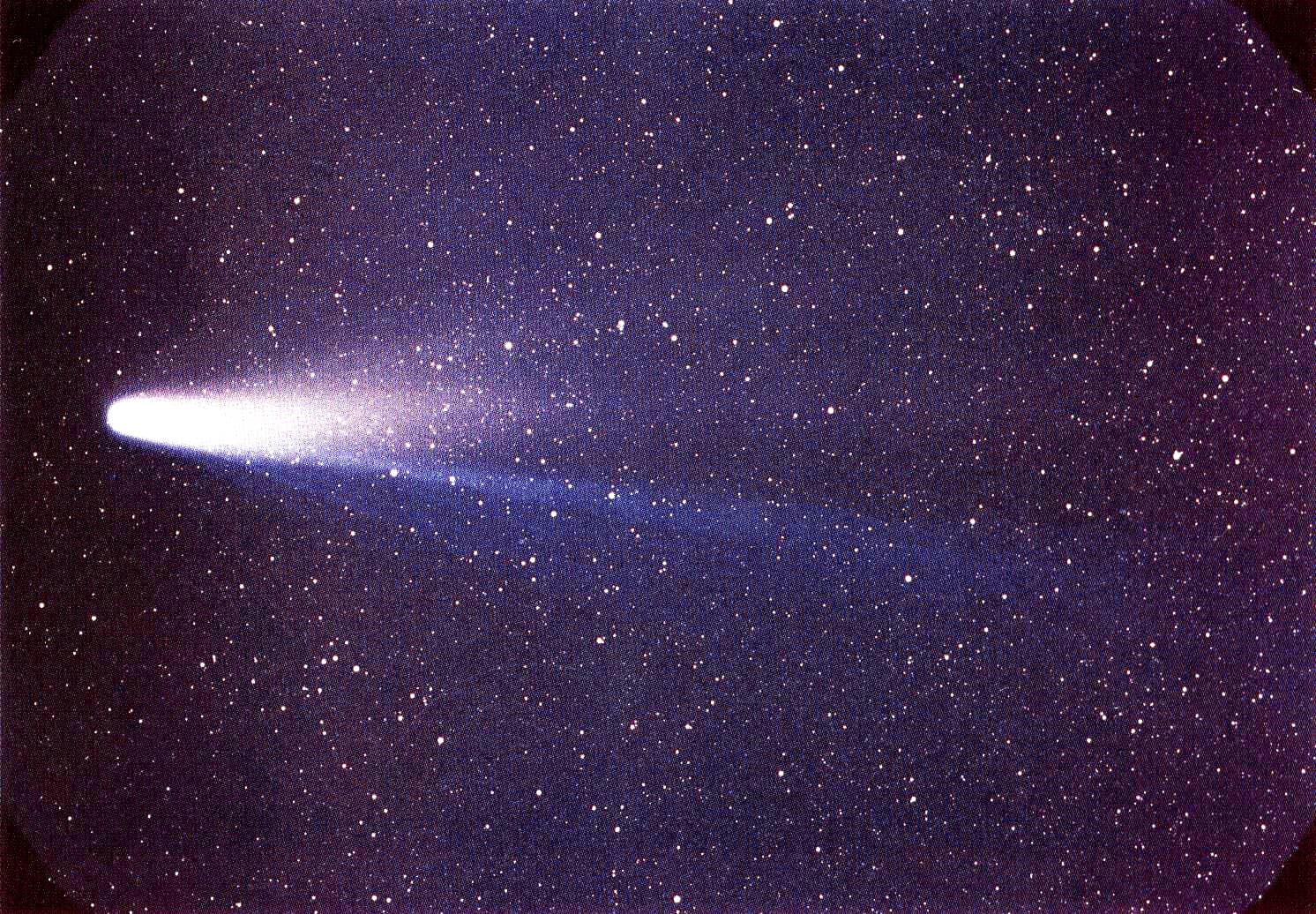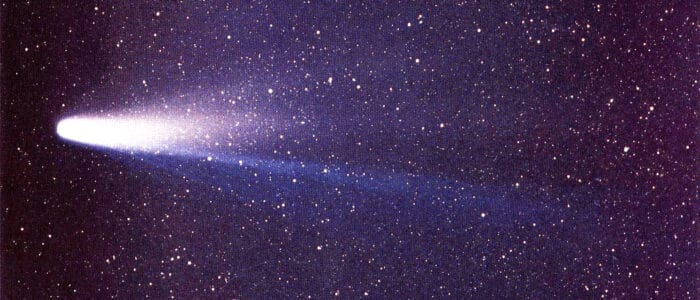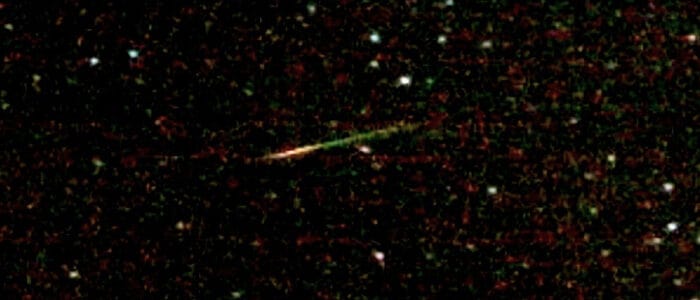Comet Halley can appear twice in a human lifetime. Spectacular meteor showers are visible when Earth passes through the tail twice every year. The Orionids meteor shower in October and the Eta Aquariids in May
Comet Halley is currently --,--- from Earth. Find the Comet Halley tracker below.
Where is Comet Halley now? (live tracker)
3D Web App
Comet Halley is speeding through space at --,---. It’s getting --,--- --,--- us every second. It flies past Earth at --,---.
Since last night Comet Halley is --,--- --,---. Since you started looking at this page it is --,--- --,---.
Why is it exciting
Comet Halley is the only comet that can appear twice in a human lifetime.
What causes the spectacular tail?
When a comet comes close to the sun, radiation is blasted at the comet from the sun. The comet will lose a little bit of trapped gas and dust, and it will come off as a beautiful tail of small particles. Usually, this tail is great in size. It depends on how close it is to its parent star. The closer it is, the larger the tail is as there is more radiation hitting the comet. With Leonard, you can see the dust sort of radiating off of the comet. This shows how the comet tail works. At the top of the comet is the Nucleus, which is where all of the dust and radiation is coming from. This one has a nucleus of about 15 × 8 × 8 Kilometer, or 9 x 5 x 5 Miles.
*This Interactive 3D Simulation is built on data provided by NASA JPL HORIZONS database for solar system objects and International Astronomical Union’s Minor Planet Center. Distances and speeds are estimates based on this data.
Photo Credit and other: NASA, ESO/S. Brunier, NASA/JHUAPL/SwRI, NASA/JPL-Caltech, JAXA, University of Tokyo & collaborators, UH/IA, Solar System Scope/INOVE CC BY 4.0, Wikipedia/Creative Commons Attribution-ShareAlike License, icons8.com, Péter Eke, NASA/Goddard/University of Arizona/Roman Tkachenko, Wikimedia Commons, Hayabusa 2 Arrival illustration by Akihiro Ikeshita (permission granted), oNline Web Fonts, Font Awesome, Galaxy vector created by stories – www.freepik.com



